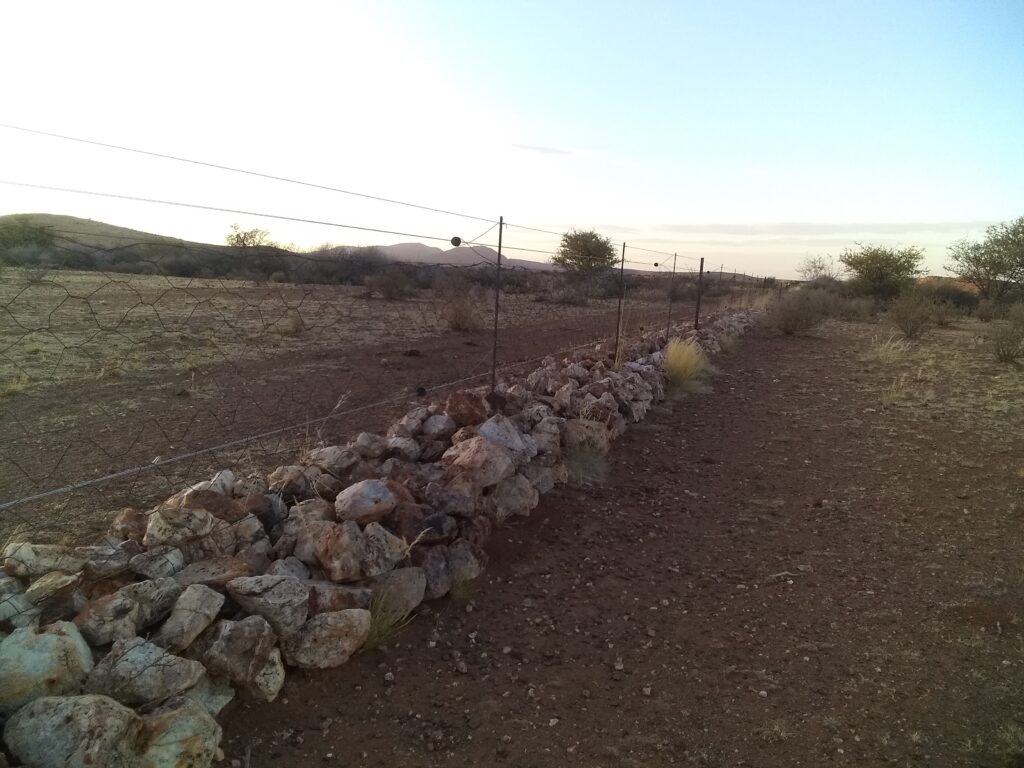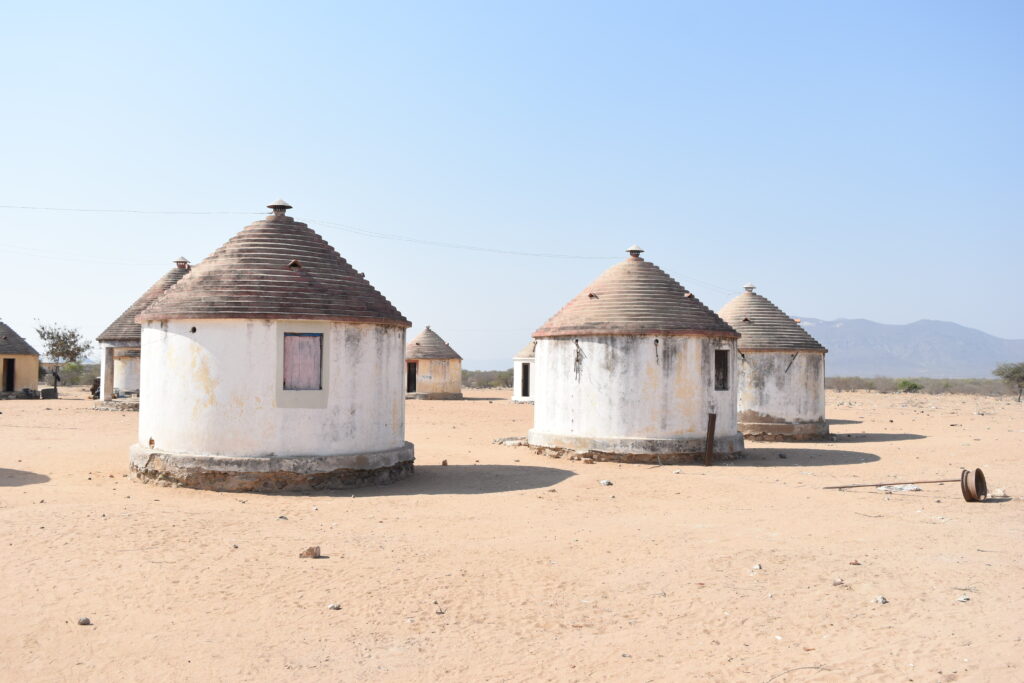By: Bernard C. Moore (Michigan State University)
ORIGINALLY PUBLISHED 16 APRIL 2021 [LINK TO ORIGINAL]
CONTINUED FROM PART TWO [LINK]
In parts one and two of this article series, I have shown how the development of Angola’s karakul industry in the mid-twentieth century threatened the flow of contract labourers from the south of Angola to white-owned farms in Namibia. These changes were accelerating throughout the 1950s, prompted also by the growth of the mining sector in Namibia, to which more and more workers would eventually be sent.
Fenced Out
We conclude this series by digging deeper into what was proposed by Yorck von Schütz in his 1957 editorial in Die SWA Boer.His final analysis and recommendation went as follows: the era of migrant labour for white farmers was ending, and farmers must mechanise production as much as possible to reduce their dependence upon African labour entirely. Von Schütz recommended that karakul sheep farmers must double-down on building jackal-proof fencing, constructing internal grazing camps, drilling additional boreholes and laying pipeline, and also installing electric shearing machines. The jackal-proof would aid in controlling and eliminating predators, and the camps and water installations would allow for management of flocks with fewer farm workers. While some farmers had already begun jackal-proofing prior to 1957, following von Schütz’s editorial, the number of applications by white farmers for loans and subsidies from the SWA Administration for fencing exploded. Between 1958-1970, more than 6,000km of camp fencing and 3,000km of jackal-proof was constructed on white farms each year, supported with government subsidies.
Since shepherding was about herd mobility and predator management, up to 70% of shepherds were made redundant by 1970, when most karakul farms had finished their jackal-proofing. While these technological installations were expensive to construct, upon completion more money was in the pockets of karakul farmers each year, as fewer sheep were lost to predators and fewer farm workers were paid salaries. Furthermore, with high pelt prices in the late-1960s and immense numbers of pelts exported (3.6 million in 1969), jackal-proof paid for itself.

But what of the workers? Among the Angolans, some of them took up work within Angola itself, in the Reserva Pastoril do Caracul or in other industries such as fishing. Others tried to get their SWANLA (South West Africa Native Labour Association) contracts renewed, only to find that they weren’t needed in such high numbers anymore. A document at the National Archives of Namibia (NAN) reported that over 3,000 Angolan workers didn’t get their farm labour contract renewed for 1971, with many taking up residence in Ondangwa to avoid being caught up in the border war. Ironically, a lot of these ex-workers fell prey to SWATF military recruiters and Koevoet violence.
For Nama workers – many of whom were resident as tenant families on white karakul farms in the early 1960s – evictions became the norm of the 1970s. With the creation of the apartheid-era homeland ‘Namaland’ – made up with an additional 163 so-called ‘Odendaal farms’ – it was envisioned that with assistance from the apartheid government Nama farmers could take up karakul. While this was indeed the case for some, the majority of the several hundred families evicted from white farms – reported in the NAN documentation as an explicit result of jackal-proofing – found themselves in a difficult situation, as the Odendaal Commission’s plans did not account for these families in their planning of the homeland. Many were simply placed at Gibeon until a plot could be arranged for them. Most were unable to truly participate in the wealth of karakul until the 1980s, when the pelt industry had already collapsed.
Legacies of Colonialism
On the day before I was to leave Angola, the chief veterinarian Dr. Felgueiras called us back to the veterinary station; he had managed to get a hold of the shepherd who was entrusted with the karakul flock, and the sheep were brought into the kraal near the station. The karakul industry in Angola was never large compared to Namibia or South Africa, but it never technically died. It survived the liberation war, the abrupt departure of the Portuguese in 1975, and twenty-seven years of civil war. Today, the Estação Zootécnica do Caraculo has only 28 remaining karakul sheep, four of which are rams, and all are descendants of the original smuggling operations of the 1950s. It’s funny to think that such a small operation had such a large impact on the economic history of agriculture in Namibia, whose legacies live on to the present day.
Namibia’s karakul industry is healthier than Angola’s, but it’s still a shadow of its old self. Developments in the domestic and export meat markets – especially in the context of global pelt prices – have made mutton sheep (especially dorper and Meatmaster) the breeds of choice. But the jackal-proof still stands decades later. Certain lengths have rusted and fallen; some have been replaced anew. But with flocks of stubborn dorper sheep, who lack the herd mentality of karakul, farming without jackal-proof would be simply impossible, as the breed is far harder to herd and is better to be allowed to graze freely. For this reason, on dorper farms, one often finds a sort of ‘camp walker’ or ‘wire watcher’ class of worker who follows the jackal-proof fencing, repairing breaks and filling in holes dug by jackals and aardwolves: he tends to fences now, rather than sheep.

Studying history is about understanding how the past affects our present. And when we pull on these unusual ‘threads’ in the archives or in our interviews with older people, we realise the complicated and interconnected factors which shape our situation today. Despite small improvements in the minimum wage for farm labourers (N$4.62 p/h since 2017), salaries for workers remain woefully low, leading to justifiably high turnover among the workforce. Furthermore, the average commercial sheep farm employs fewer than half the number of workers it did in 1960. While there are causes of this relating to the post-independence trajectory of Namibia, we must also understand rural un(der)employment as a long-term effect of the economic and infrastructural plans of the apartheid era. The economic legacies of colonialism and apartheid lived on beyond 1990.
